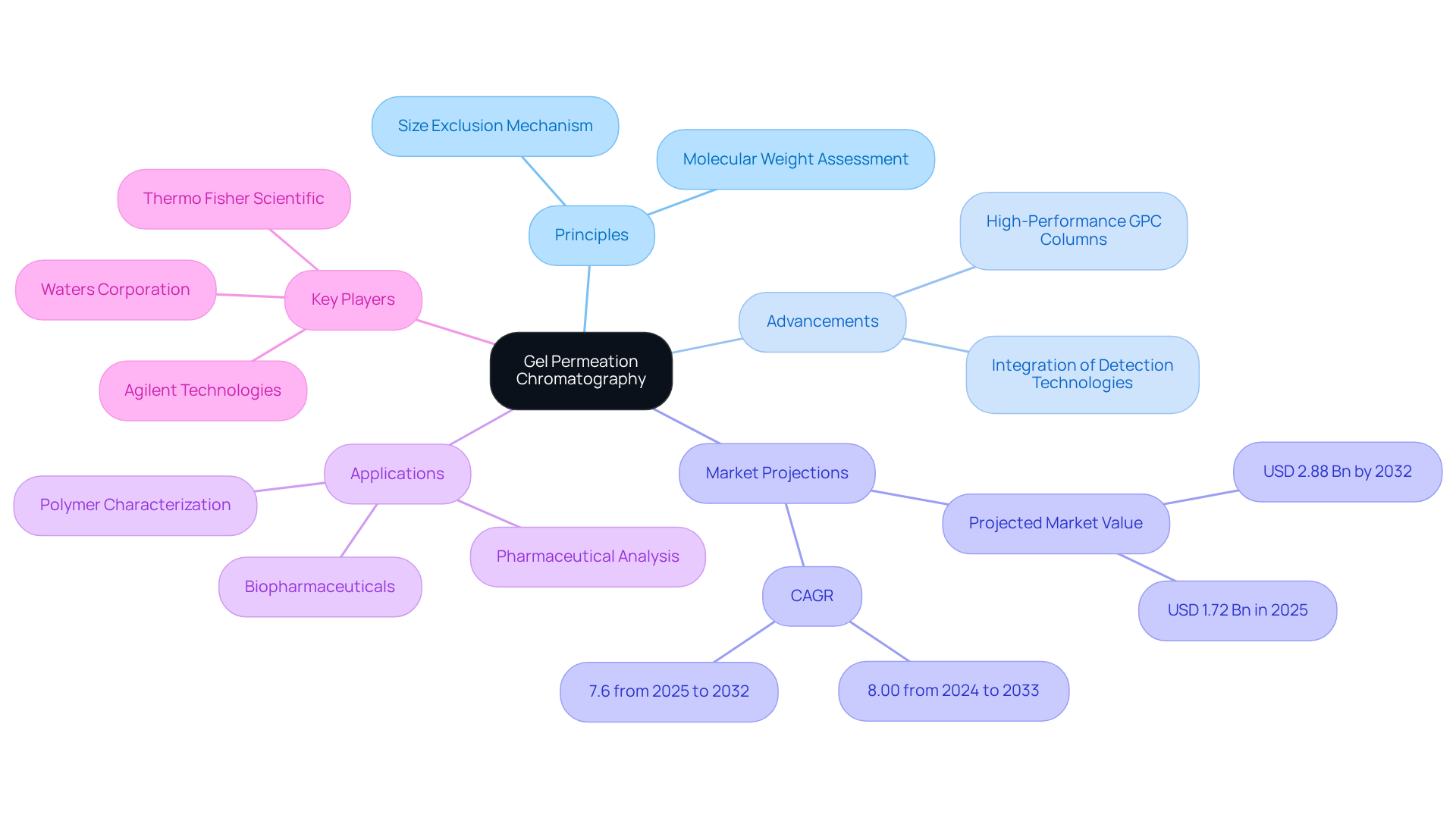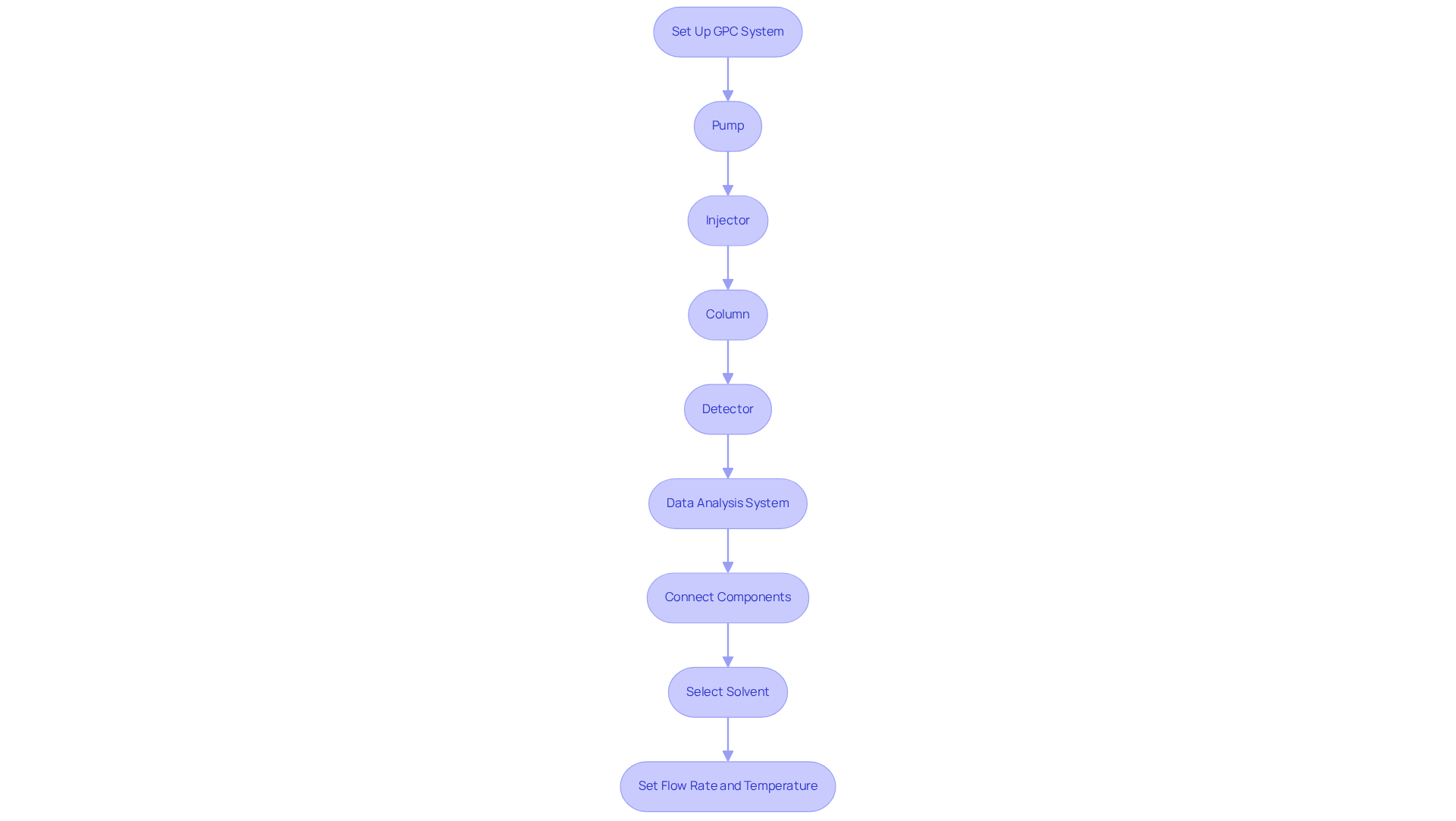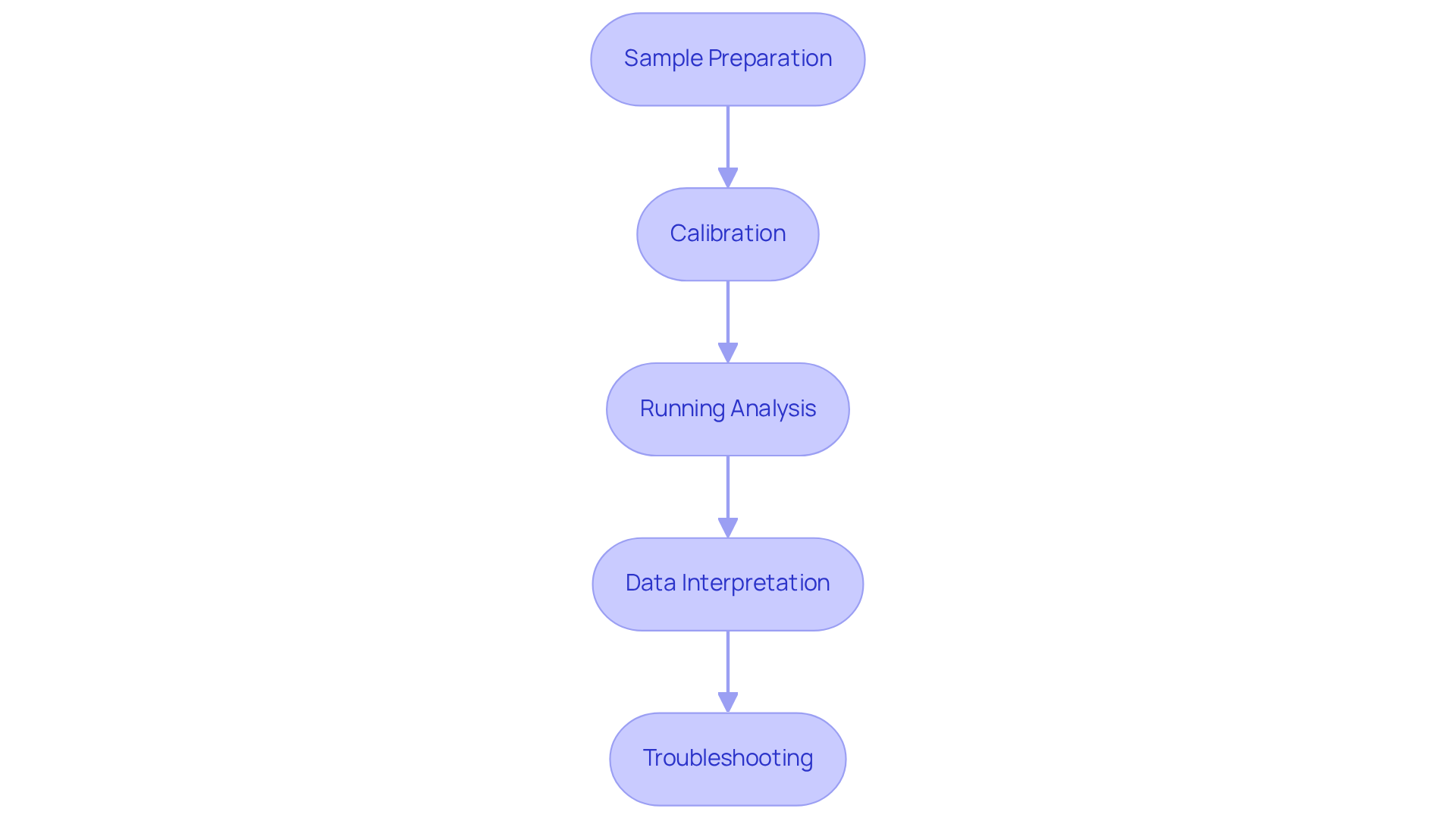Overview
This article delves into the setup and techniques crucial for mastering gel permeation chromatography (GPC) of polymers. It underscores the significance of proper instrumentation and methodologies, which are essential for accurate polymer characterization. Key components of a GPC system are detailed, including:
- Pumps
- Injectors
- Detectors
Furthermore, it outlines critical procedures such as:
- Sample preparation
- Calibration
These are vital for achieving reliable and precise analytical results in material science. Understanding these elements is imperative for any laboratory aiming to enhance their analytical capabilities.
Introduction
Gel permeation chromatography (GPC) is a pivotal technique in polymer analysis, providing a sophisticated method for the separation of molecules based on size.
As technological advancements continue to transform the landscape of materials science, grasping the principles and configuration of GPC is essential for researchers intent on enhancing their analytical capabilities.
The complexity involved in setting up GPC systems, coupled with the intricacies of effective polymer characterization, presents challenges that must be navigated.
To unlock the full potential of this powerful technique, it is crucial to understand how to overcome these obstacles.
Understand Gel Permeation Chromatography: Principles and Mechanisms
Gel permeation chromatography of polymers, often referred to as size exclusion chromatography (SEC), is a crucial method for the separation of molecules based on size. The fundamental principle of GPC is the exclusion of larger molecules from entering the pores of the stationary phase, typically a gel, while smaller molecules are allowed to penetrate these pores, resulting in a delayed passage through the column. This size-based separation facilitates an accurate assessment of in plastics, which is crucial for evaluating both synthetic and natural materials.
Recent advancements in gel permeation chromatography of polymers techniques have markedly improved resolution and reproducibility, establishing it as an invaluable instrument in materials science and characterization. The introduction of high-performance GPC columns, for instance, has significantly enhanced analytical capabilities, enabling researchers to acquire more precise information regarding substance size and polydispersity. These parameters are essential for understanding the physical characteristics and behavior of synthetic materials across various applications, including drug delivery systems and material development.
The GPC market is projected to reach USD 2.88 billion by 2032, reflecting the increasing demand for advanced analytical techniques within the pharmaceutical and biotechnology sectors. The practical applications of gel permeation chromatography of polymers are evident in studies focused on characterizing substances, where this technique aids in the separation and measurement of biomolecules according to size and mass. This capability is particularly advantageous in the pharmaceutical sector, where accurate atomic mass assessment is vital for the development of effective therapeutic agents.
Key players in the GPC market, such as Agilent Technologies and Waters Corporation, are persistently innovating to enhance GPC technology, addressing challenges such as high initial setup costs and competition from alternative analytical techniques. As the demand for sophisticated analytical methods escalates, GPC continues to play a crucial role in advancing our understanding of material behavior and characteristics, thereby fostering innovation across diverse sectors.

Set Up GPC: Essential Instruments and Configuration
To establish a Gel Permeation Chromatography (GPC) system, several essential instruments are required:
- Pump: This component is vital for delivering the mobile phase (solvent) through the system at a consistent flow rate, which ensures reliable separation.
- Injector: The injector plays a crucial role in introducing the sample into the mobile phase, ensuring thorough mixing before it enters the column.
- Column: As the heart of the GPC system, the column is packed with porous gel beads that facilitate the separation of molecules based on size. Choosing the appropriate column is critical for effective gel permeation chromatography of polymers analysis, as it directly impacts the efficiency of separation.
- Detector: Typically, refractive index (RI) detectors are employed to measure the concentration of eluted samples; however, other detectors such as UV or light scattering can also be utilized for more comprehensive analysis.
- Data Analysis System: This software processes the data collected by the detector, allowing for the interpretation of molecular weight distributions and other relevant parameters. Agilent offers software options for gel permeation chromatography of polymers that enhance data analysis capabilities, simplifying the management and interpretation of results.
Configuration Steps:
- Ensure that all components are properly connected and calibrated according to the manufacturer's specifications.
- Select a suitable solvent that is compatible with the material being analyzed, as this choice will influence separation efficiency.
- Set the desired flow rate and temperature conditions, as these parameters can significantly impact the results. For instance, the Nexera HPLC system features automated functions that help maintain optimal conditions during analysis.
It is noteworthy that the gel permeation chromatography of polymers system segment is projected to dominate the market revenue share in 2025, highlighting the importance of gel permeation chromatography of polymers systems in laboratory environments. Nevertheless, challenges such as and limited awareness in developing regions may hinder the growth of the GPC market.

Apply GPC: Techniques for Polymer Characterization and Analysis
When employing gel permeation chromatography of polymers for characterization, several key techniques must be prioritized to ensure accurate results. Effective sample preparation is paramount; thus, it is essential to ensure the polymer is fully dissolved in a suitable solvent to prevent column clogging. Filtration is often necessary to eliminate particulates that could interfere with the analysis, ensuring a smooth process from the outset.
Calibration is another critical step. Employing standard mass markers for system calibration is essential for precise mass determination, as it establishes a dependable relationship between retention time and mass. This foundational step sets the stage for reliable analysis and interpretation.
Once the sample is prepared and calibrated, the next phase involves running the analysis. Inject the prepared sample into the GPC system and closely monitor the elution profile. Both baseline stability and peak resolution are vital, as they directly influence the accuracy of the results, leading to meaningful insights about the polymer being studied.
Following the analysis, data interpretation becomes crucial. Analyze the detector-generated data with a focus on key parameters such as weight average molecular weight (Mw), number average molecular weight (Mn), and polydispersity index (PDI). These metrics are essential for understanding the material's characteristics and performance, providing a comprehensive view of the polymer's behavior.
Finally, be prepared for troubleshooting common issues such as peak broadening or unexpected retention times. Adjustments to flow rates, column temperature, or solvent composition can often rectify these problems, ensuring the integrity of the analysis.
Recent advancements in analysis techniques for polymers, particularly through gel permeation chromatography of polymers integrated with multi-angle light scattering (MALS), significantly enhance the ability to characterize these materials accurately. These developments support a deeper understanding of polymer behavior and properties, ensuring laboratories can meet the evolving demands of .

Conclusion
Gel permeation chromatography (GPC) is an essential technique for the analysis and characterization of polymers, leveraging the principle of size exclusion to provide precise insights into molecular weight distribution. This method enhances the understanding of material behavior and plays a pivotal role in various applications, particularly within the pharmaceutical and biotechnology sectors. As GPC technology continues to evolve, its significance in advancing analytical capabilities cannot be overstated.
This article delves into the fundamental principles of GPC, the essential instruments required for setup, and the best practices for effective polymer characterization. Key insights include:
- The importance of sample preparation
- Calibration techniques
- Data interpretation
All of these contribute to the accuracy and reliability of GPC results. Recent advancements, such as the integration of multi-angle light scattering, are highlighted as vital developments that enhance the characterization of polymers.
In light of the growing demand for sophisticated analytical methods, mastering the setup and techniques of gel permeation chromatography is crucial for researchers and professionals in the field. By embracing these advancements and adhering to best practices, laboratories can improve their analytical capabilities and foster innovation in material science and polymer research. The future of GPC holds promising potential, paving the way for breakthroughs that will continue to shape the landscape of polymer analysis and characterization.




